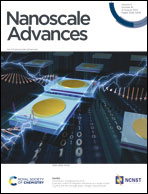Dual-axis control of magnetic anisotropy in a single crystal Co2MnSi thin film through piezo-voltage-induced strain
Abstract
Voltage controlled magnetic anisotropy (VCMA) has been considered as an effective method in traditional magnetic devices with lower power consumption. In this article, we have investigated the dual-axis control of magnetic anisotropy in Co2MnSi/GaAs/PZT hybrid heterostructures through piezo-voltage-induced strain using longitudinal magneto-optical Kerr effect (LMOKE) microscopy. The major modification of in-plane magnetic anisotropy of the Co2MnSi thin film is controlled obviously by the piezo-voltages of the lead zirconate titanate (PZT) piezotransducer, accompanied by the coercivity field and magnetocrystalline anisotropy significantly manipulated. Because in-plane cubic magnetic anisotropy and uniaxial magnetic anisotropy coexist in the Co2MnSi thin film, the initial double easy axes of cubic split to an easiest axis (square loop) and an easier axis (two-step loop). While the stress direction is parallel to the [1−10] easiest axis (sample I), the square loop of the [1−10] direction could transform to a two-step loop under the negative piezo-voltages (compressed state). At the same time, the initial two-step loop of the [110] axis simultaneously changes to a square loop (the easiest axis). Otherwise, we designed and fabricated the sample II in which the PZT stress is parallel to the [110] two-step axis. The phenomenon of VCMA was also obtained along the [110] and [1−10] directions. However, the manipulated results of sample II were in contrast to those of the sample I under the piezo-voltages. Thus, an effective dual-axis regulation of the in-plane magnetization rotation was demonstrated in this work. Such a finding proposes a more optimized method for the magnetic logic gates and memories based on voltage-controlled magnetic anisotropy in the future.



 Please wait while we load your content...
Please wait while we load your content...